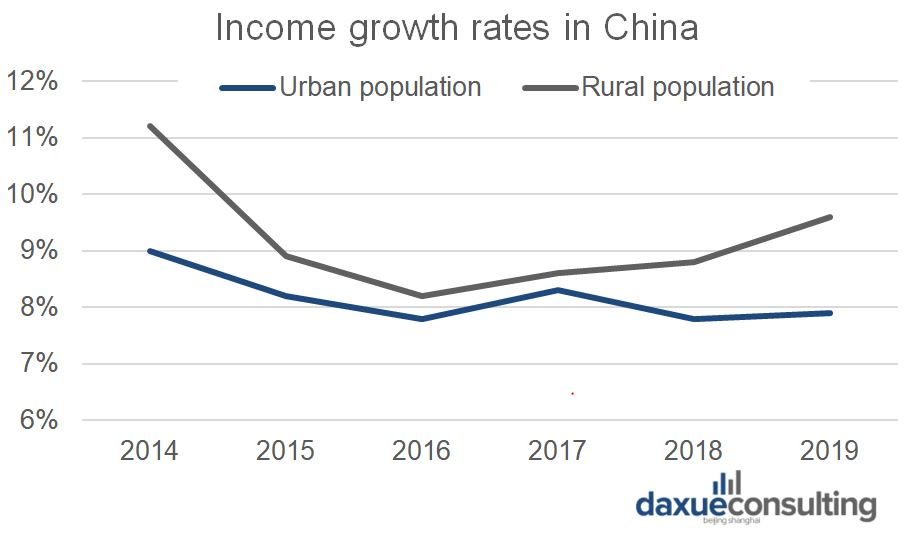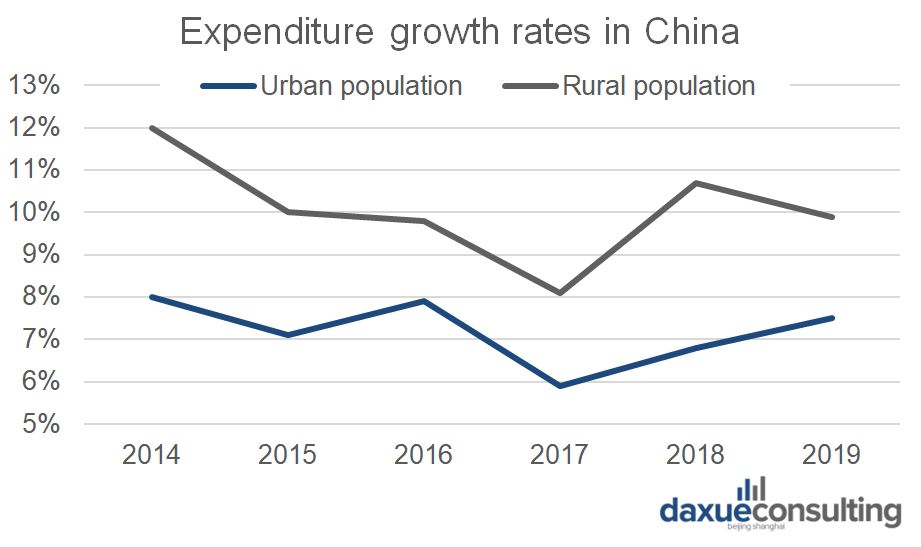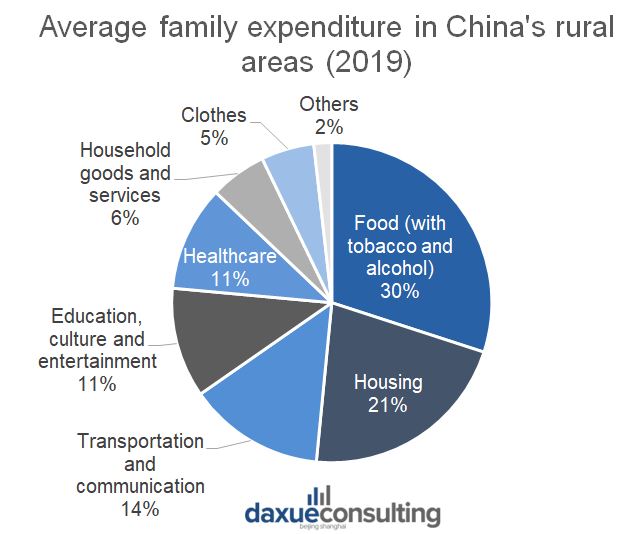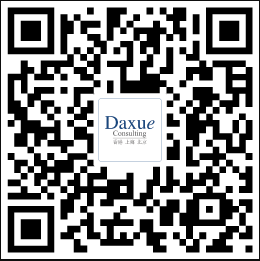The incredible popularity of Chinese short-video star Liziqi, who has 13.7 million subscribers on Youtube and 34 million on Douyin, has drawn the world’s attention to rural China. Viewers see the countryside in China as a fairyland, while Xinhuanet, China’s official press agency, described the rural market in China as a “gold mine” of consumption growth. In China’s tier-1 and tier-2 cities, the economic growth momentum is declining, and the consumption market has begun to saturate. As a result, expanding the rural consumption in China has become one of the core strategies for the Chinese government. As of 2019, 39% of the Chinese population is rural, which is about 540 million people.
How the government promotes rural consumption in China
To promote domestic consumption within the 14th Five Year Plan’s framework of the “dual circulation economy,” China’s authority is keen to stimulate rural areas’ economy. One of the priorities is to improve income distribution in the rural area and farming sectors. Counsellor of the State Council Qiu Bao Xing said, “[the state] will… use the impact and good business environment of cities to propel the opening-up of rural areas.” China will continue to emphasize the development of the rural market in the new era by utilizing existing resources previously concentrated in urban areas.
Increasing incomes push the fast growth of rural consumption in China
The future potential of the rural consumption in China is enormous. China’s rural areas have consistently experienced a sharp growth in both income and expenditure growth rates since 2014, contributing to a large portion of the domestic market growth. However, both the income and expenditure per capita still remain much lower than those for urban residents. In 2019, the rural population’s income per capita is only 16,021 RMB, around a third of their counterparts in the city. However, the expenditure per capita of 13,328 RMB is around half of their city counterparts, meaning rural income to expenditure ratio is less than urban counterparts. The favorable policies in the new era will likely accelerate catching up and further expanding the market.

Source: National Bureau of Statistics of China, designed by Daxue Consulting, Comparison of income growth rates in China

Source: National Bureau of Statistics of China, designed by Daxue Consulting, Comparison of expenditure growth rates in China
In 2019, the majority of the expenditure of the rural population was food (including tobacco and alcohol) and housing, averaging 3,998 and 2,871 RMB, respectively. However, it is worth noting that the pressure from housing in rural areas is significantly less than that in the urban areas; thus, consumer confidence is higher. Other sectors, including healthcare, education and entertainment, and clothing markets, experienced rapid growths of 14.6%, 13.8% and 10.1% in 2019, respectively. These markets’ all have great potential due to the expected increasing demands stimulated by the improvement of living standards.

Source: National Bureau of Statistics of China, designed by Daxue Consulting, Average expenditure in rural areas (2019)
The prospects of the “Xiachen” market
“Xiachen”, which literally translated to sink or submerge, is a buzzword referring to the economy of tier-3 and below cities. This phrase has been a hot concept in Chinese E-commerce in the past few years. The markets in lower-tier cities and rural areas have become the focal point of China’s e-commerce businesses. Since 2014, the e-commerce giants, especially Alibaba and Taobao, began aggressive expansion into the rural market.
Rural consumption in China has been evolving and gradually catching up with its urban counterparts. With 250 million active internet users in rural areas, the rural e-commerce market has huge potential. According to a report published by BigData-Research, electronic devices and clothes are categories that rural shoppers most often buy online. More than 62% of e-commerce consumers and 60% of clothing consumers choose to buy them online, while 39% and 31% of shoppers purchase their home appliances and farming-related products online respectively.
Not only has rural e-commerce consumption expanded, more and more farmers and businesses in rural areas are also entering the market. Pushed by a series of recent policies, online sales of businesses in rural areas have grown more than eightfold from 180 million RMB in 2014 to 1.7 trillion RMB in 2019, accounting for 18% of the total sales online.
There are more than 13.8 million online sellers in rural areas as of 2019. Many people, such as migrant workers, university students and veterans, return to rural areas to start their businesses. As a result, many “Taobao villages” have emerged in recent years. The online marketplace platforms allow farmers to expand their consumer base. The farm produce accounts for more than 400 million RMB sales online in 2019.

Source: Ministry of Commerce, designed by Daxue Consulting, Online sales from rural businesses
Different from the urban market, there are several e-commerce platforms dedicated to farmers, such as Yimutian, which not only provide a platform for sales of farm produces from the rural producers and sales of farming-related products to the farmers but also provide market information, training, and logistics and delivery services. Similar platforms facilitate the development of the rural market and have extensive customer and seller bases in rural areas.
Online social activies drive rural consumption in China
The internet plays an essential role in developing the rural and low-tier market in China. According to QuestMobile, in October 2020, the number of internet users from tier-3 and below cities reached 669 million and accounts for 58% of the total, with a monthly average usage time growing up 2% from 137.3 hours to 140.1 hours.
Another report also pointed out that consumers from rural market usually have the following characteristics: a demand to kill time, sensitivity to prices, and easily influenced by others. These features allow internet companies to develop marketing strategies catered to these consumers.
In terms of e-commerce, PinDuoDuo is one of the most successful platforms in expanding in the rural and low-tier city market in China. Different from Taobao, PinDuoDuo has focused on consumers from tier-3 and tier-4 cities since the very beginning. It designed a “social fission” strategy that implemented both sociality and affordability: when a consumer shares a product link on WeChat and has his friends clicked on it, he would get a certain amount of discount on this product; the more people click on his links, the more discounts they would get.
As a result, consumers end up with more affordable products and the company is reaching more consumers. This strategy has worked more effective on rural consumers than on consumers from big cities and has allowed PinDuoDuo to double its active users to 700 million within two years.
Favorable policies facilitate access to the rural market in China
One of the focuses in the 14th Five Year Plan is to cautiously accelerate the ongoing “village-turned-community” program that facilitates the urban-rural integration by assisting farmers moving into modern facilities. This way, the government can provide better access to public services at a lower cost.
Simultaneously, this transformation can stimulate the rural consumption in China, especially online. The limited access to the internet and logistics are difficulties faced by rural China’s e-commerce industry. The authorities also considered the high cost of logistics in rural areas as a pain point. The Ministry of Commerce has indicated that it would be their emphasis in 2020. In addition to services provided by modern facilities, the development of internet coverage and logistics networks in rural areas will benefit the growth of the market.
COVID-19 and mindsets impact the purchasing power
The major challenges faced by the government is that the plan to stimulate domestic consumption would require a huge wealth shift from the state to households. The existing urban-rural divide will make the task even more difficult for the rural population.
Many people, especially the older generations, have a limited income which is used to purchase essential goods, such as food and medicine. The COVID-19 pandemic further hit the market in the less-developed inland provinces, especially in the rural areas, which has been extensive. The relatively poor consumers substantially cut their living expenses.
Other than the difficulties imposed by logistics and internet access, the mindset towards online shopping is also a challenge for further development, especially for the Chinese elderly who are more likely to distrust online shopping. The platforms and sellers will need to increase their marketing effort in the rural market and truly understand the market.
What brands should know about China’s rural and low-tier city consumers
Though incomes are relatively low, the consumption power should not be underestimated. Rural consumers have less living costs than their urban counterparts, in addition to having more free time, and a faster rising income.
Additionally, e-commerce is key to rural consumers. China’s low tier and rural consumers have more access to internet than offline shopping areas, and more and more of these consumers are acquiring internet devices (especially mobile phones).
Marketing strategies to reach China’s rural and low-tier city consumers
- Social-fission. Compared to Chinese urban consumers, rural consumers are more influenced by their peers. They also treat e-commerce shopping as a social activity, and prefer shopping experiences that include engaging with friends.
- Discounting and deals. Rural consumers are relatively price sensitive and will respond to price more so than their urban counterparts.
- Gamification. As rural consumers often lead less busy lives than urban consumers, entertainment is in demand. Gamification is also one way to pull together social-fission and discounting.
- Live-streaming. Recently, live-streaming in China has exploded in popularity and rural consumers are no exception. Live-streaming has become an important marketing tool for rural farms and businesses, but rural consumers in China also make a good consumer base for live-streaming.
Learn something new? Stay updated on the Chinese market by following our WeChat, scan the QR code below, or subscribe to our newsletter

Learn how to reach young Chinese consumers through nostalgia marketing
Listen to over 100 China entrepreneur stories on China Paradigms, the China business podcast
Listen to China Paradigm on Apple Podcast






